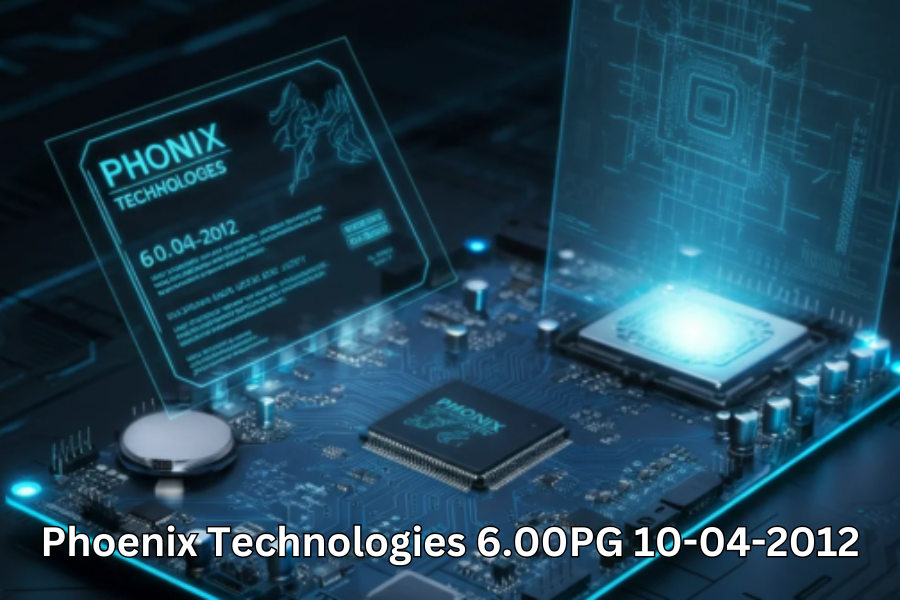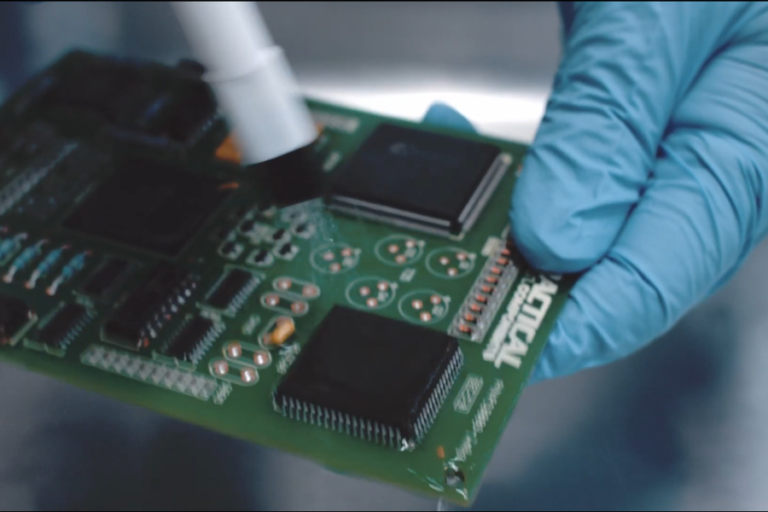Phoenix Technologies 6.00PG 10-04-2012: The Full Guide for Users
In this thorough guide, we’ll dive deep into the features of Phoenix Technologies 6.00PG 10-04-2012, explore its main advantages, discuss how to update it, and address common user challenges. Whether you’re a tech enthusiast or seeking to enhance your system’s performance, this guide will provide valuable insights.
What Is Phoenix Technologies?
Founded in 1979, Phoenix Technologies is a company known for its specialized firmware development for computing devices. The primary role of its BIOS software is to act as a bridge between hardware components and the operating system, initializing hardware during startup and ensuring the system boots up smoothly, allowing the operating system to function correctly.
Phoenix Technologies has been at the forefront of BIOS innovation, with its 6.00PG version marking a significant improvement in system performance, security, and hardware compatibility.
Introduction to Phoenix Technologies 6.00PG 10-04-2012
Phoenix Technologies 6.00PG 10-04-2012 was released on October 4, 2012, and quickly gained popularity due to its stability and broad compatibility across a wide variety of systems. This version was designed to handle the increasing complexity of modern computing. It introduced notable improvements over previous BIOS versions, including enhanced security, reduced boot times, and better power management.
This release primarily targeted desktop and laptop markets and was embraced by hardware manufacturers seeking a dependable firmware solution.
Main Features of Phoenix Technologies 6.00PG 10-04-2012
Phoenix Technologies 6.00PG 10-04-2012 came with a number of updates to enhance system performance and user experience. Here are the standout features:
Faster Boot Time
The boot sequence was optimized, significantly cutting down startup times for systems, making the operating system load much faster. Hardware initialization was streamlined, ensuring quicker access to the OS.
Improved Hardware Support
The BIOS provided extensive support for a wide range of processors, motherboards, and peripheral devices. It was designed to ensure compatibility with both legacy and newer components, especially those introduced around 2012.
Advanced Security Enhancements
This version integrated Secure Boot to prevent the loading of unauthorized or harmful software during startup. Password protection for BIOS settings was also enhanced to safeguard against unauthorized access.
Enhanced Power Management
Phoenix Technologies 6.00PG supported advanced power-saving features, optimizing system energy usage. It also improved system compatibility with modern power-saving states like sleep and hibernation.
Simplified User Interface
The BIOS setup menus were designed to be more intuitive, allowing users to easily adjust hardware settings. Clearer descriptions for settings helped users avoid making errors in configuration.
Advantages of Phoenix Technologies 6.00PG 10-04-2012
The release of Phoenix Technologies 6.00PG 10-04-2012 brought numerous benefits to both users and hardware manufacturers, including:
Dependable Performance
The BIOS version ensured stable communication between hardware and the operating system, reducing the likelihood of crashes and boosting system stability.
Improved Security Measures
With the introduction of Secure Boot, systems became more resistant to malware, offering enhanced protection against threats.
Broad Compatibility
Phoenix Technologies 6.00PG 10-04-2012 supported both old and new hardware, which made it a versatile solution for many users.
Increased Energy Efficiency
The power management updates in this release helped minimize energy consumption, making it especially useful for laptops and portable devices.
How to Check if Your System Uses Phoenix Technologies 6.00PG 10-04-2012
If you’re unsure whether your system is running Phoenix Technologies 6.00PG 10-04-2012, follow these steps to find out:
Checking the BIOS Menu
- Restart your computer.
- During startup, press the designated key (usually F2, DEL, or ESC) to enter the BIOS menu.
- Look for the BIOS version listed on the main screen or in the system information tab.
Using System Information (Windows)
- Press the Win + R keys to open the Run dialog box.
- Type msinfo32 and press Enter.
- In the System Information window, check the “BIOS Version/Date” field to see the BIOS version currently installed.
How to Update Phoenix Technologies 6.00PG 10-04-2012
Updating your BIOS can improve system compatibility, performance, and security. Here’s a step-by-step guide on how to update Phoenix Technologies 6.00PG:
Preparation Steps
- Backup Your Data: Make sure to back up all important files in case something goes wrong during the update.
- Identify Your Motherboard Model: Refer to your system’s or motherboard’s manual to ensure you download the correct BIOS update.
Steps to Update
- Download the BIOS Update: Visit the official website of your motherboard manufacturer or Phoenix Technologies to get the latest update for your system.
- Create a Bootable USB Drive: Format a USB drive and copy the BIOS update file onto it.
- Enter the BIOS Setup: Restart your computer and enter the BIOS setup by pressing the designated key.
- Initiate the Update: In the BIOS menu, find the update section, select the update file from the USB drive, and follow the on-screen prompts.
- Restart the System: After the update is completed, reboot your computer to apply the new BIOS version.
Troubleshooting Common Issues with Phoenix Technologies 6.00PG
Even though Phoenix Technologies 6.00PG is generally reliable, you may encounter some issues. Below is a table outlining some common problems and their solutions:
| Problem | Solution |
| System fails to boot | Reset BIOS to default settings or check for hardware issues. |
| BIOS update fails | Retry the update, ensuring the battery is charged or use a UPS. |
| Cannot access BIOS menu | Ensure you are pressing the correct key during startup. |
| Boot device not recognized | Verify the boot order settings in the BIOS. |
Key Facts
- Firmware Purpose: It is a BIOS (Basic Input/Output System) version used for initializing hardware components during the boot process of desktops and laptops.
- Enhanced Boot Performance: This BIOS version significantly reduced boot times by streamlining hardware initialization and improving system startup speeds.
- Improved Hardware Compatibility: It supported a wide range of processors, motherboards, and peripheral devices, ensuring compatibility with both older and newer hardware components from around 2012.
- Security Features: One of the key security advancements in this version was the integration of Secure Boot, which prevents unauthorized or malicious software from loading during system startup.
- Advanced Power Management: It introduced better energy efficiency, especially for laptops, by supporting modern power-saving modes like sleep and hibernation.
- User-Friendly Interface: The BIOS setup menus were simplified, making it easier for users to configure hardware settings and manage the system without confusion.
- Wide Adoption: This version gained popularity among hardware manufacturers due to its stability and reliability, making it a preferred choice for system configurations in both consumer and enterprise markets.
- System Optimization: Phoenix Technologies 6.00PG 10-04-2012 improved system stability by ensuring smooth communication between the operating system and hardware, minimizing crashes and errors.
- Versatility: It was designed to be compatible with various operating systems and configurations, making it suitable for a broad range of users, from home computers to professional workstations.
Final Thoughts on Phoenix Technologies 6.00PG 10-04-2012
Released in 2012, Phoenix Technologies 6.00PG remains a vital update in the evolution of BIOS software. With its security enhancements, faster boot times, and improved hardware support, this BIOS version was a solid firmware solution for desktop and laptop systems. Understanding how to leverage this BIOS version and troubleshoot any issues that arise will ensure optimal performance for systems still using this firmware.
Keeping your BIOS up-to-date and using its features effectively can help maintain system security, performance, and compatibility.
Frequently Asked Questions About Phoenix Technologies 6.00PG 10-04-2012
- What does Phoenix BIOS do?
Phoenix BIOS initializes hardware components during startup and facilitates smooth communication between hardware and the operating system. - Can I update my Phoenix BIOS 6.00PG?
Yes, BIOS updates are available from your motherboard manufacturer or Phoenix Technologies’ website. - What is Secure Boot in Phoenix BIOS?
Secure Boot is a security feature that prevents unauthorized or malicious software from loading during system startup. - How do I reset Phoenix BIOS settings?
You can reset the BIOS settings to their default state by entering the BIOS menu and selecting the “Load Defaults” option. - Why is my system taking a long time to boot?
Check for outdated hardware, incorrect BIOS settings, or try updating your BIOS for potential improvements. - Is Phoenix BIOS 6.00PG compatible with modern hardware?
While it supports hardware available when it was released, it may not work well with the most recent components. - How can I back up my BIOS settings?
If supported, you can save your BIOS settings to an external storage device from the BIOS menu. - Can I customize Phoenix BIOS?
Yes, users can adjust various settings such as boot order, power management, and more within the BIOS setup.
Stay updated with the latest news and trends here at My Reading Manga!






